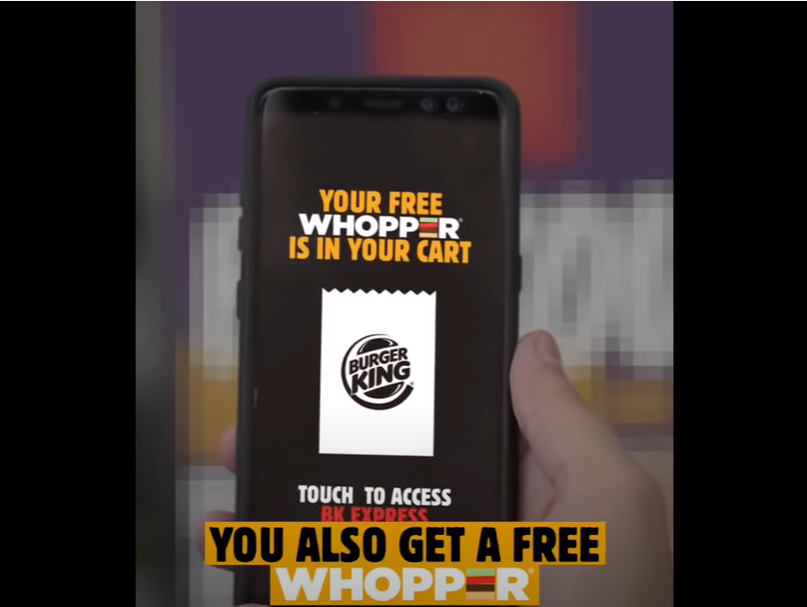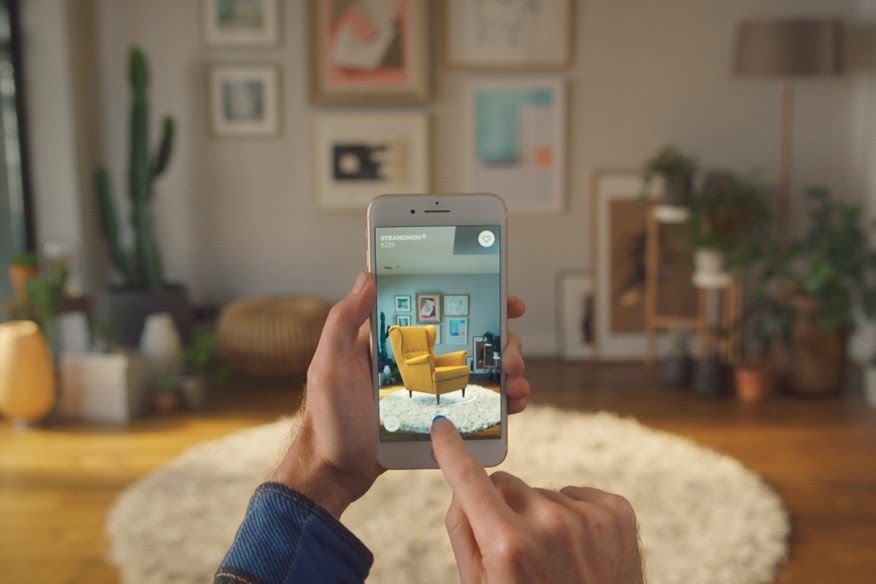Do you remember this ad by Burger King?


This campaign 'Burn that Ad’ was a huge marketing success.
Users were rewarded with a free meal at BK by pointing their smartphones at a McDonald's outdoor ad and seeing it "burn" on their phones, which is changing the way brands advertise and promote their products.
So, what was all that about? What technology did they use?
Let’s dig a little deeper.
What is AR in marketing?
In recent years, the marketing and advertising industries have witnessed a transformation known as augmented reality (AR). AR enables marketers to present customers with one-of-a-kind, engaging experiences that combine ‘real’ and 'virtual' interactive aspects.
This rising trend is redefining the marketing and sales game, and it is quickly becoming one of the top options in B2C marketplaces.
Augmented Reality (AR) is a method of “augmenting” the real world with virtual items. While the goal of Virtual Reality (VR) is to construct full virtual worlds, virtual items are generated in an AR system in such a way that they appear to coexist with real ones.
AR can be used in a variety of ways, including apps and connected packaging. In this article, we will look at the benefits of augmented reality in marketing and discuss how your business may benefit from this innovative, interactive virtual solution to stand out from the crowd.
Google unveiled its version of augmented reality (AR) with the launch of Google Glass in 2012, which attracted a lot of criticism and skepticism, most likely because it was a little ahead of its time.
But one of the primary reasons Google Glass failed was a lack of clarity about why the product exists. The designers did not properly describe or validate what solutions Google Glass would provide to its consumers, nor did they explain how customers would use the glasses.
The current adaptation of AR, on the other hand, shows a paradigm change.
Fashionable eyeglasses, contact lenses, or even bionic eyes with immersive 3D displays are the future, conjuring up a digital layer to "augment" reality, enabling entirely new kinds of applications and user experiences.
How can AR benefit marketing?
AR provides a myriad of solutions for a diverse range of businesses in a variety of industries. In fact, the advantages of augmented reality in marketing are limitless, especially for innovative firms that employ this cutting-edge technology to attract and engage their audiences.
These solutions can be used to easily demonstrate to customers how to utilize a given product or service without the need for large instruction manuals.
Because it is now feasible to experience AR with nearly any web browser, consumers do not need to purchase expensive equipment and can simply enjoy the trip with their smartphone's camera.
With competition on the high, you need to stand out.
The proliferation of AR-capable devices has played a significant role in making augmented reality more widely used in marketing, advertising, and sales.
Many online buyers endure the inconvenience of not being able to try on their clothes or shoes before purchasing them, which leads to disappointment when they test out their new purchases for the first time.
Augmented reality marketing apps tackle this problem by allowing customers to virtually experience a product before purchasing it, therefore increasing customer happiness.
Furniture and interior design companies, such as Ikea, are also increasingly utilizing augmented reality technology in their operations.
They now allow consumers to digitally exhibit new furnishings in their living rooms and kitchens by simply using a mobile phone app.

The program scans the expanse of a room using an iPhone or iPad camera to visualize a product within a location. To make their decisions, users can search an online database of over 2,000 IKEA goods.
After selecting a product, users must aim the device to the desired location in a room, then drag and drop the product into place. IKEA Place also allows users to store their favorite products, share them on social media, and make direct purchases on the IKEA website.
Another example…
In November of 2018, Shopify released its AR feature. According to the company's blog, the functionality helps users interact with the product by delivering a more accurate sense of scale and dimensions.
Sellers may use the 3D Warehouse software to build these 3D models.

Challenges faced by AR in marketing
Augmented reality marketing solutions, like anything else in life, have benefits and drawbacks. On the one hand, as demonstrated by the examples provided thus far, augmented reality solutions are simple to use, easily accessible and promote user-brand engagement.
Communication can also be greatly improved in some businesses, such as real estate because purchasers can now conduct virtual visits to homes without having to drive huge distances and spend time.
Aside from the apparent requirement that the user have at least a smartphone as with all tech-based solutions, you may encounter a fault in the system, a brief error, or a frozen image. However, as technology advances, solutions become more dependable.
Furthermore, as with any app or smart solution, users may have privacy concerns. Even if security has become a primary priority for AR app developers through the use of updates, encryption, and other security procedures, you can always secure your privacy while enjoying an augmented reality experience by utilizing strong codes in trusted devices.
The future of AR in marketing
The era of Augmented Reality in advertising and marketing began with technology developments. Companies continue to adopt Augmented Reality technology and push forward to provide end-users with a real experience of their products and services.
As it merges both online development and visual stimuli in advertising, it appears to be a more natural shift in technological advancement.
This also implies that this is more than just a marketing gimmick, but a psychological strategy to remove the barrier of fantasy in the mind of a buyer.
Thus, as a potential customer interacts with the product and begins to personalize it, the likelihood of a successful product purchase goal increases dramatically.
EndNote
If you’ve been thinking about expanding your business, now is the time.

